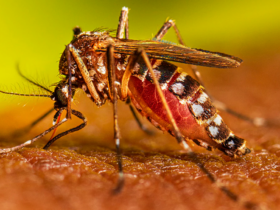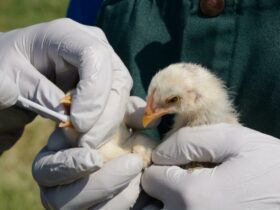United States: Authorities stressed vigilance without undue alarm regarding the current outbreak of avian influenza, commonly known as bird flu, during a recent briefing with the press.
In newly published reports on Thursday afternoon, officials provided updates on the extent and progression of the highly pathogenic avian influenza outbreak. Since late last year, the disease has affected cattle on over 90 farms across 12 states, with three documented cases of human transmission originating from cattle. These incidents have garnered significant media attention, according to USA Today.
Dr. Nirav Shah, principal deputy director of the Centers for Disease Control and Prevention, emphasized the importance of interpreting these statistics within context. He urged continued vigilance without unnecessary panic during the briefing.
According to officials, eleven of the affected farms have applied for financial support from a federal program aimed at fostering collaboration on public health initiatives among farmers.
Currently, farm workers are considered the group most vulnerable to bird flu, which poses minimal risk to the general public unless it mutates to allow human-to-human transmission. Presently, direct exposure to infected animals remains the sole known mode of transmission.
As the number of affected animals rises, so too does the risk of the virus mutating into a form transmissible among humans, as highlighted by USA Today.
To prevent this scenario, Dr. Raj Panjabi, former White House Senior Director for global health security and biodefense, advocated for applying lessons learned in preventing farm-to-farm transmission among poultry to dairy farms. Federal agencies previously implemented a strategy termed “defend the flock” under his leadership. Panjabi now suggests adapting this approach to safeguard cattle herds, stating, “We need to fortify the herd.”
The exact origin and method of initial infection among US cattle remain unclear. According to federal findings, the first confirmed case occurred on a Texas dairy farm on March 25.
Officials suspect that the virus may have been inadvertently transmitted between farms via contaminated clothing worn by workers. Approximately 20% of these workers are employed on multiple dairy farms, with 7% also working on poultry farms alongside their dairy duties. Other likely conduits for transmission include vehicles transporting personnel and equipment between farms. The report noted a connection between infected farms, citing the transportation of cows between facilities and through a milk cooperative shared by more than 90% of the affected dairies.
Identifying these linkages is crucial for government and agricultural efforts to contain the disease, as concluded in the report.
However, epidemiologist Jennifer Nuzzo, director of the Pandemic Center at Brown University School of Public Health, criticized the report’s limitations. She described it as more of a survey than a comprehensive study on virus transmission, hindering insights into containment strategies, as highlighted by USA Today.
Nuzzo emphasized the absence of substantial data, attributing this gap to voluntary reporting by farms to the US Department of Agriculture. Without accurate data, she argued, effective prevention measures are impeded.
She clarified that the responsibility does not lie solely with the government, highlighting challenges in securing farm data. Understanding transmission patterns is essential to curbing further outbreaks, protecting farm workers, and preventing disease spread.
Panjabi concurred that without adequate protection for farm workers, the US remains vulnerable to bird flu.
He underscored deficiencies in protective equipment availability among workers, citing a case where infection likely occurred due to inadequate eye protection despite gloves being worn.
Currently, farm workers are only tested if symptoms suggest infection, according to CDC’s Shah, as per USA Today.
Nationwide, 45 farm workers have been tested for avian flu this year, including three positive cases. Michigan’s chief medical officer, Dr. Natasha Bagdasarian, informed the Detroit Free Press that 35 of these tests were conducted in Michigan.
Nuzzo cautioned against assuming that only those who tested positive were infected, highlighting systemic gaps that complicate diagnosis and reporting. She advocated for prioritizing vaccination for farm workers, similar to recent initiatives in Finland targeting those at high risk of avian influenza.
“I hope we don’t wait for farm workers to succumb before we decide to vaccinate individuals in the US,” she stated firmly, as highlighted by USA Today.















